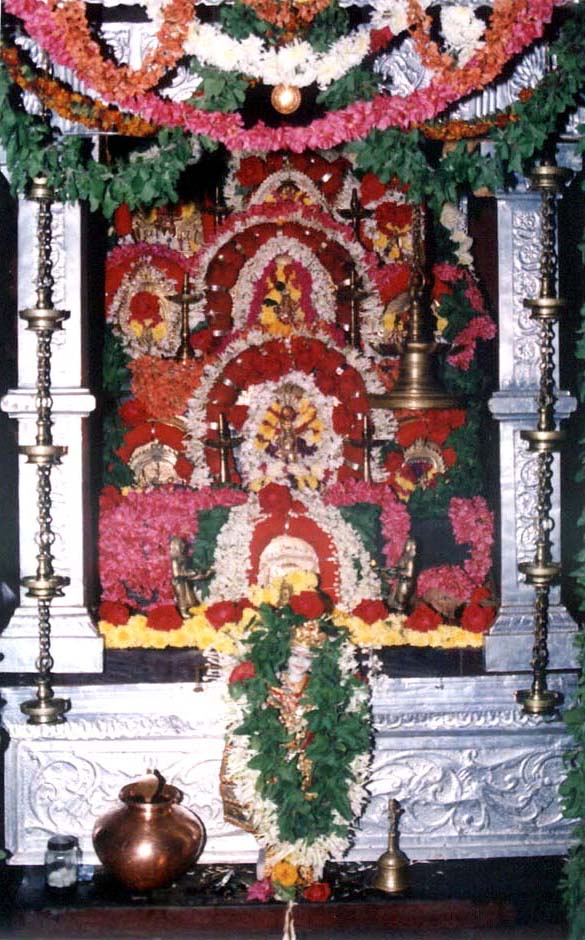
GOKULASHTAMY
Gokulashtamy Vrith was initiated by His Holiness Sri Sri Ramavallabh Das of Maharastra 360 years ago. As the fame of the revered initiator spread all over, more and more families adopted the Vrith. Some 50 years ago there must have been more than 60 Bhanapa families spread from North of Uttara Kannada to South of Dakshina Kannada, including some villages of Kerala. However, subsequent breakdown of joint families and migration of Bhanaps to Mumbai and other places, has resulted in reduction of Vrith performers.
As of now, the Vrith, as prescribed by the revered Saint, is being observed mainly in just four centers of Mallapur, Chitrapur, Hemmadi and Hattiangadi. There are many other places too, like in Talmaki Vadi at Mumbai, and several other Temples here at Canara, like Sri Shankarnarayana Temple at Udupi, and also at Brahmavar, where Vrith is observed partially, like singing Bhajans etc. but not in its full form.
Although the Bhajans prescribed by revered Saint are sung in all these places, some subtle alterations are found in rendering of Bhajans and its 'chal' at different centers.
The Bhjans are sung in the evening. On every evening the event commences from singing Nityaniyama, followed by Navavidha Bhakti, Vaara niyama, Pardi Aarthi, then finally Deevatiga Seva, followed by Mangalaarathi.
On the eve of Bahula Panchami, Dolara Visarjan takes place. Gokulashtamy proper is observed on 8th day. Then on 9th day Geetha Homa is performed. Janmakatha is observed here at Hattiangadi on Dwadashi, where as at Hemmadi, Janmakatha is celebrated on Navami. This deliberate adjustment was made some centuries ago, enables the Bhaktas from Hattiangadi to visit Hemmadi and vice versa.
The Photos presented here document some of the events at Shri Shankarnarayana Temple, Hattiangadi, where the Vrith is being performed meticulously for over three and a half centuries.

Exquisite Bronze idols of Lord Krishna decked up in Main Mantap only during Ashtamy.
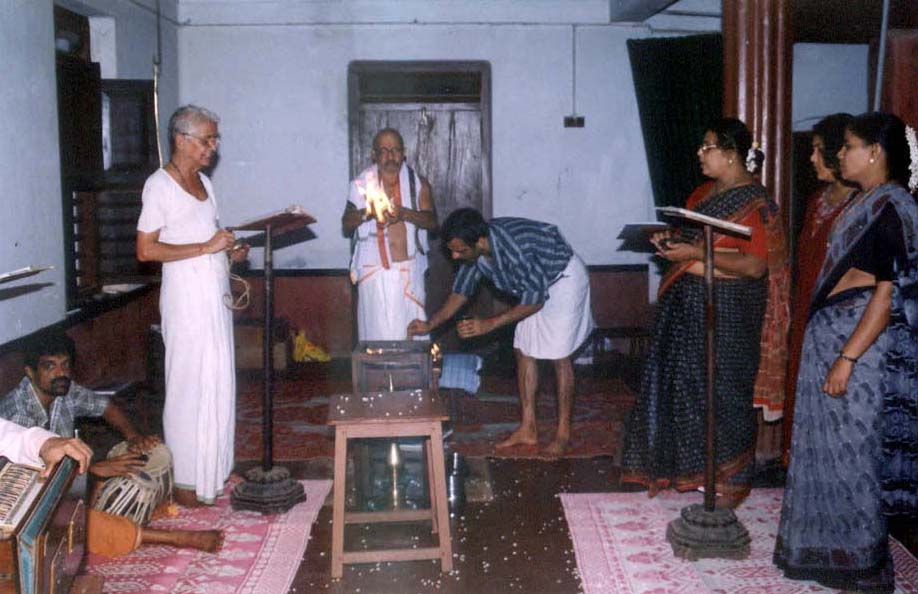
Deevatiga Seva. Seen here are Sri Ramesh Hattiangadi, Vrithadhikari and Managing Trustee of Samithi. On to his right is Sri Balakrishna Bhat. On the Tabla is Sri Ajith Bhat. Person who is mending Divli is Sri Nanda Bhat. Behind him is Smt Prameela Kundapur, Sneha Kundapur and on the right in the foreground is Smt Mamatha Kamath.
On 8th day, Ashtamy is observed. Apart from routine Bhajans, Janmakatha, poem composed by revered Master, is sung. Some of the events are depicted symbolically. When the stanzas mention 'Shesha Dhaavata aala ... ' a Wooden Serpent is hovered over 'Vasudeva's" head. Then the Bhaktas shower pushpa vrishti, with Lahi, popped rice. Finally 'Baby Krishna' is lowered into the Cradle.
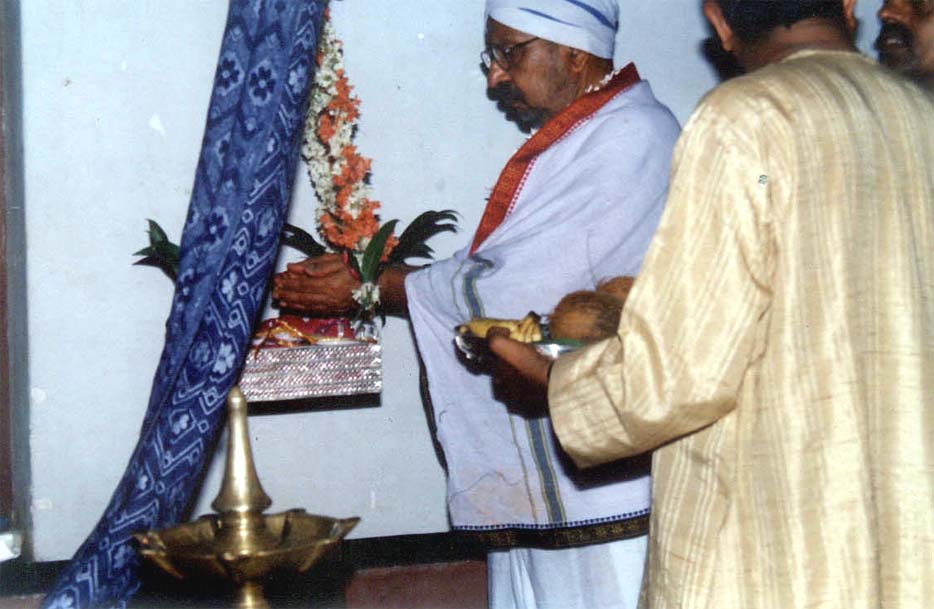
Baby Krishna is lowered into the Cradle
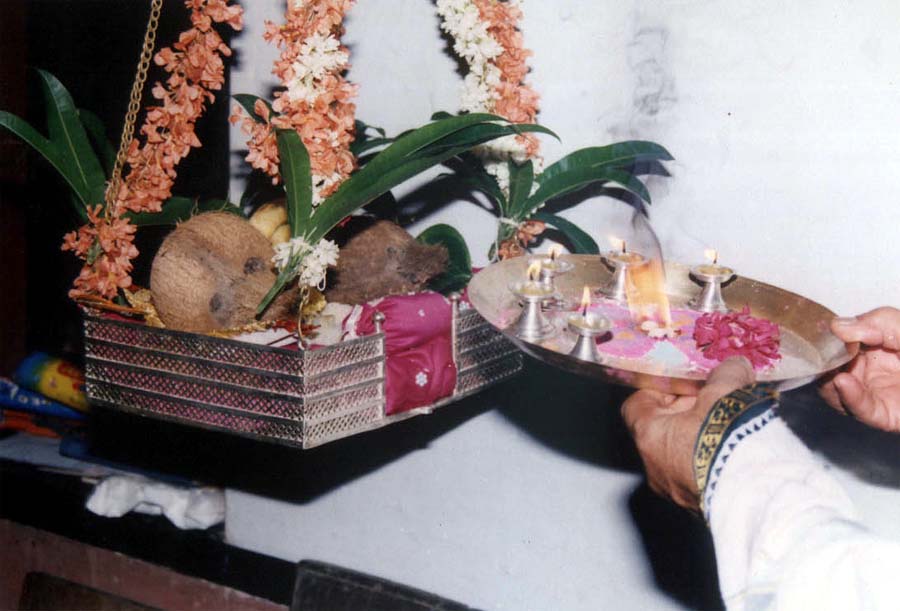
Aarthi is offered. Note the Coconuts in the Cradle.
The legend has that the coconuts kept in the cradle are given to childless couple, they will be blessed with a child. In the recent past one such couple visited the Shrine and they were blessed by a child. The parents then visit the shrine during Ashtamy in gratitude and the child is placed before the Main Mantap. It is then placed in a jholi made from an old saree. Special seva is offered after which the couple are offered prasad.
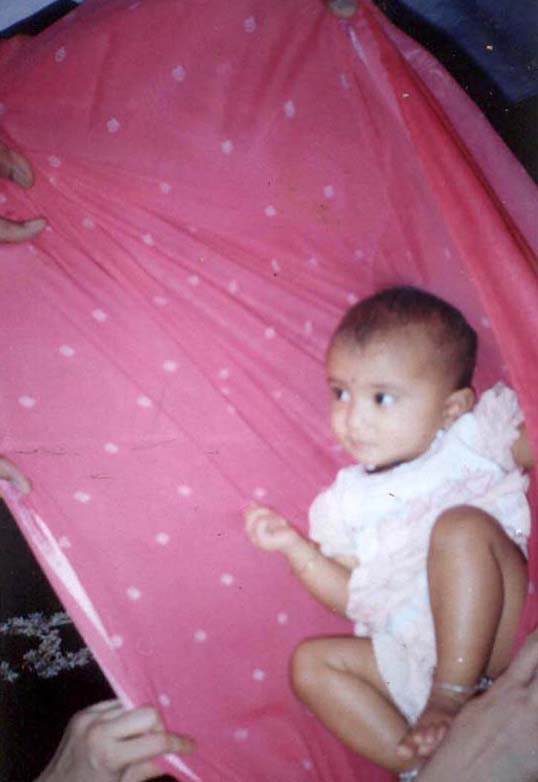
Baby swung before the Mani Mantap
Deevatiga seva started from day one with one Deevatiga, then two and three and on final day, that is on Dwadashi the Vrithadhikari offers seva with 9 Deevatigas. They are then placed on a big Harivana (plate) and brought near the main mantap while singing the Mahagondol bhajan. Aarathi is offered from these 9 Deevatigas, and finally just as the day breaks these Deevatigas are quenched with fresh Cow Milk.
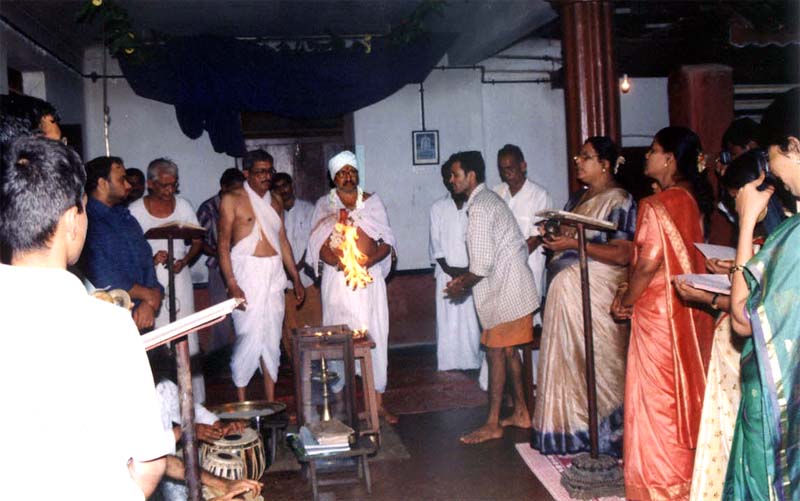
Scene just prior to Mahagondal. Vrithadhikari is holding 9 deevatigas in the hand
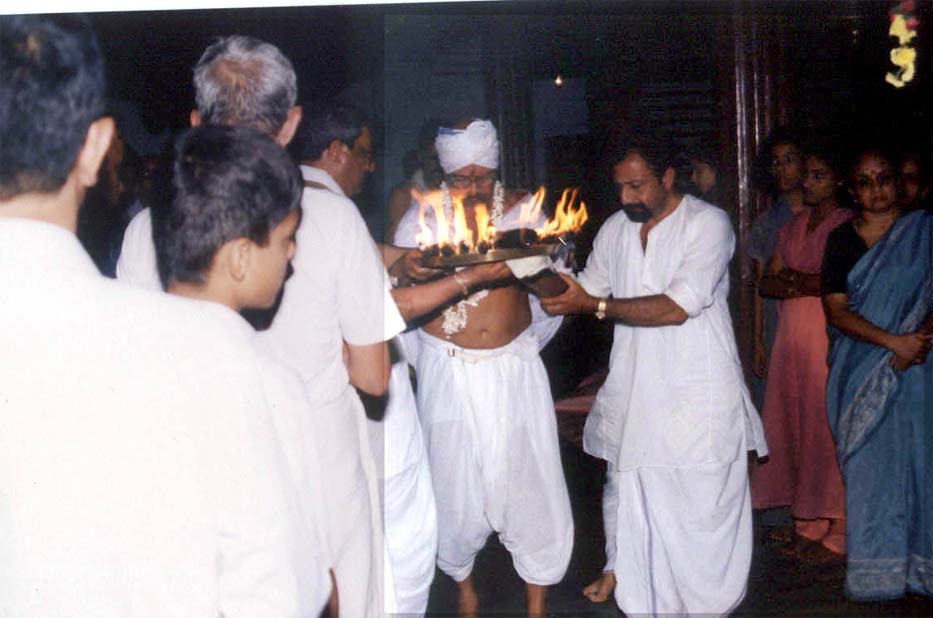
The deevatigas are placed in big phalleru and Vrithadhikari moves towards main Mantapa to perform Aarathi

Aarthi being performed with Harivana containing 9 Deevatigas
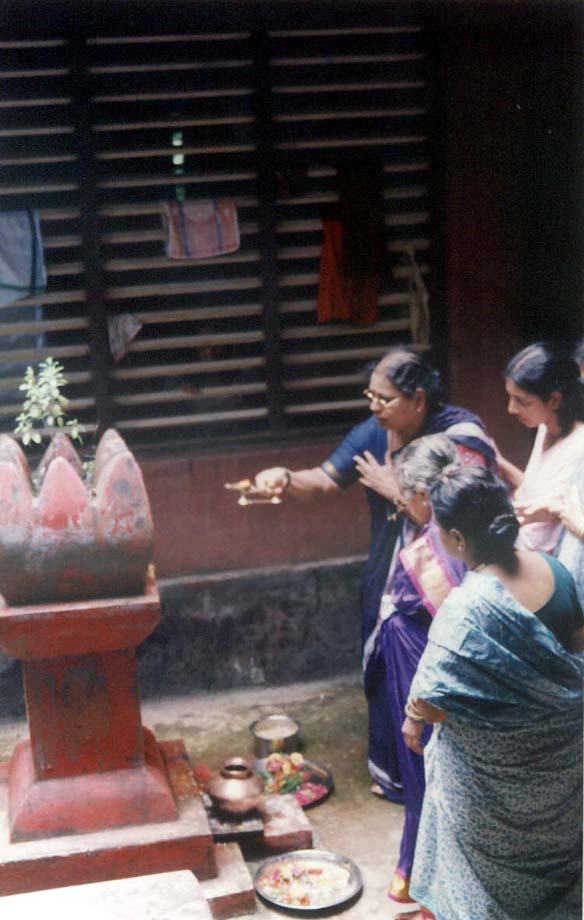
On Fridays, that is, Shravana Shukravara, ladies perform Tulsi pooja